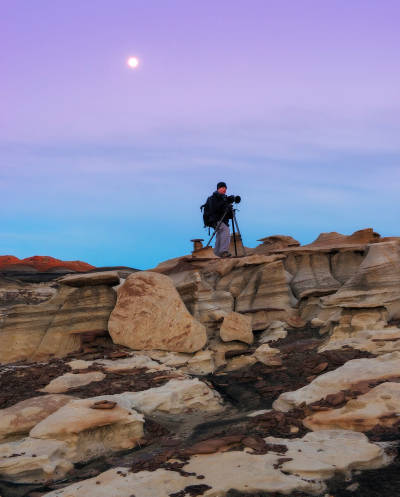This past August I had the fortune to accompany a few friends on a trip to the remote peninsulas of Alaska to photograph the grizzly bears and their families as they prepared for the upcoming winter. My closest encounter with a grizzly up to that point was some unfortunate tales I had heard while backpacking in Montana in my teens; the kind of tales that make you change the sleigh bells you’ve tied to your backpack for church bells, just in case.
We flew into the Katmai peninsula via seaplane and stayed on a converted fishing boat (actually, it was the original “Deadliest Catch” boat converted to a Natural Habitat Adventures boat), and enjoyed a pocket of great weather that contradicted the hurricane force winds, 20-foot seas and rain that had blown through the straight a few days before. Each day was spent taking a small skiff to streams where the grizzlies fished through thousands of salmon and jockeyed for position at the feeding grounds. We were accompanied by an accomplished bear guide and naturalist who ensured the bears were in no danger, and ultimately that we became part of the natural scenery and didn’t interfere with the natural course of their activities.
Here are some of my favorite shots and small stories behind them.

The Horned puffin: who knew they could fly under water?
The horned puffin, a smallish bird in Kodiak, Alaska. Kin to the tufted puffin, and skittish of boats. They have a slightly hard time taking off from the water, with a long gait to their paddling before achieving flight, but do apparently fly under water instead of merely swimming.
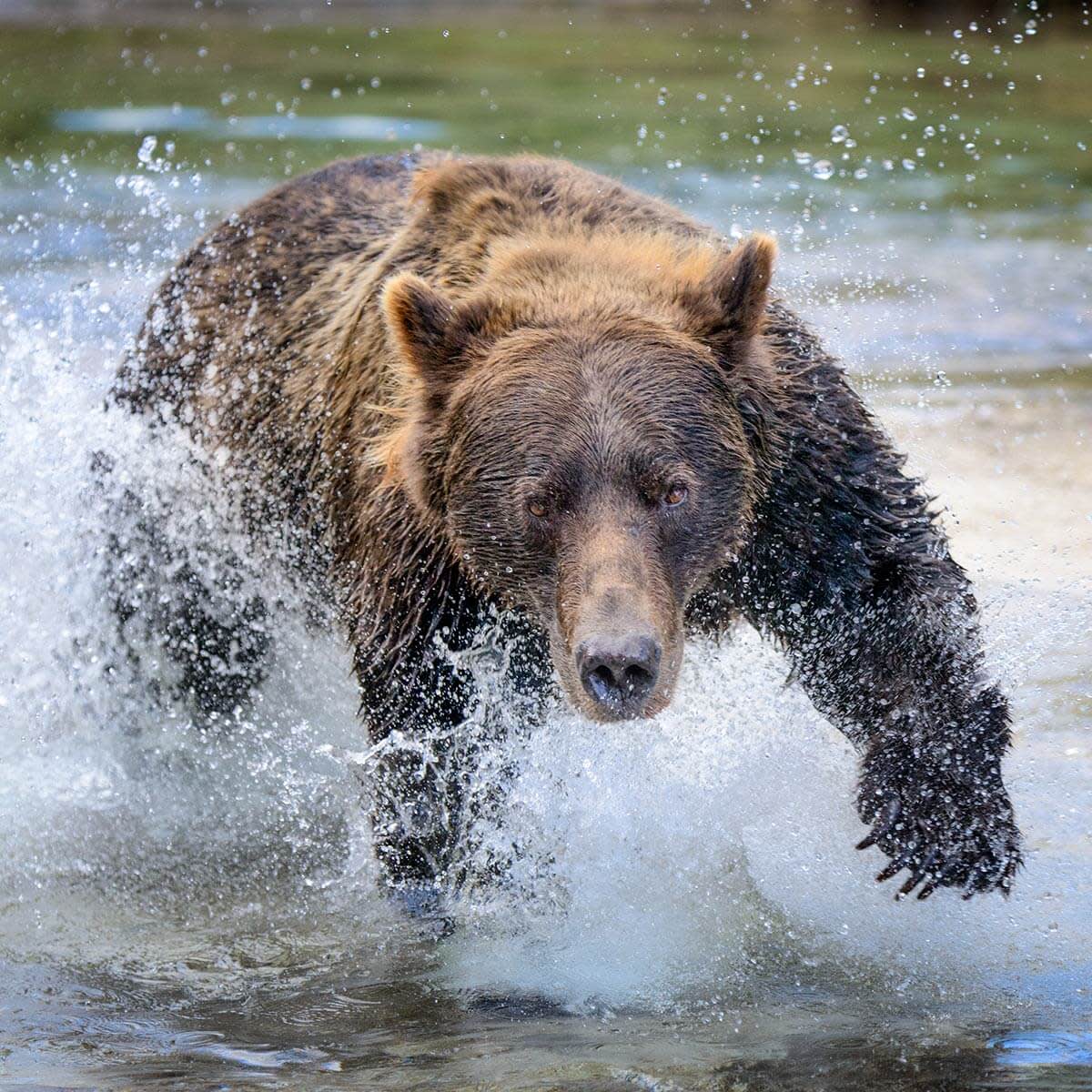
A mother bear notices a hidden photographer and comes over for a meal.
With bears passing 10 feet in front of my small cul-de-sac in the rocks by the river, my 600mm lens became too long to keep the entire bear in frame. As I watched the bears come closer and closer, I got more and more uneasy on my perch among the rocks. I found that looking through the viewfinder made it less real and more movie-like, which calmed my nerves somewhat. So I didn’t panic outwardly when this mother suddenly charged straight at me from about 20 feet away. I zoomed my 80-400mm out and snapped a few shots before freezing in abject panic. I quickly realized she was going for a fish and not my head.
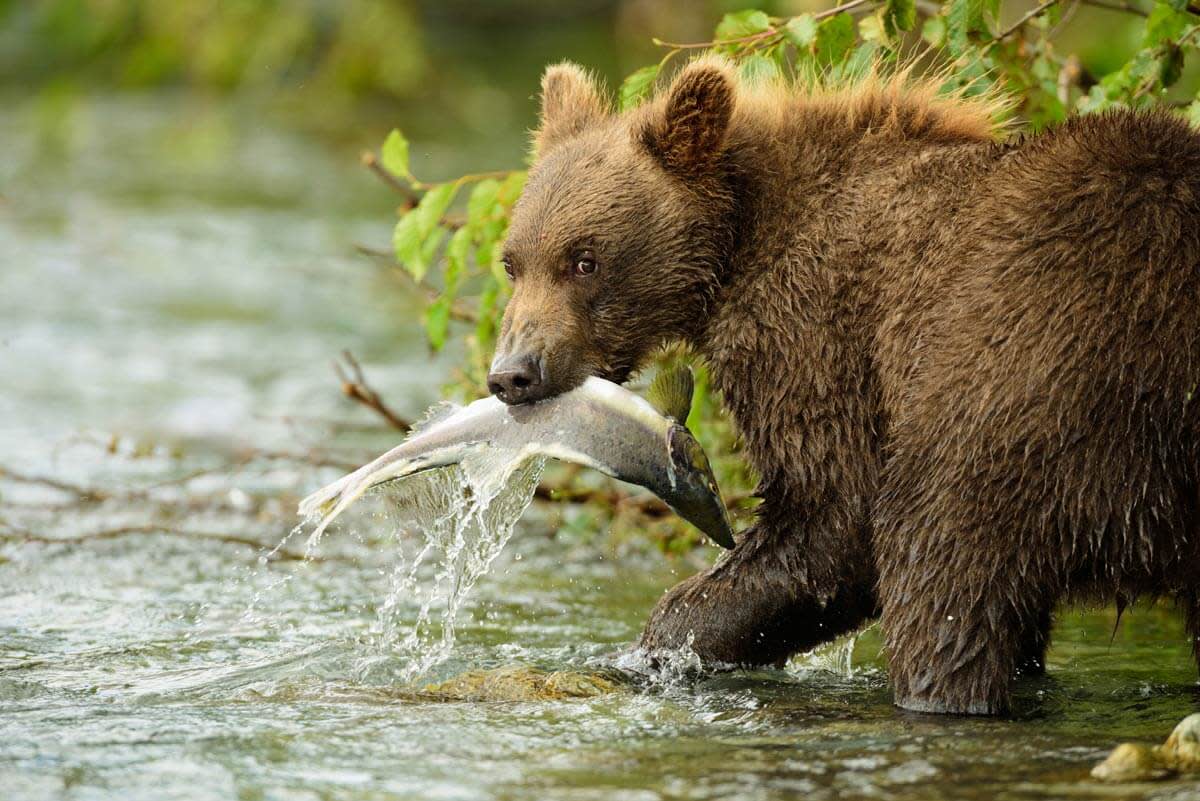
A young male catching a fish by the water’s edge in Katmai, Alaska.
The fish were teeming in the river, but most of the bears had the best luck in the shallow parts where they could stomp on a salmon and then pick it up by dragging it up their leg with their other paw and typically either carrying it off to a more secure place (like this one is doing), or immediately biting the tail off and beginning their meal.
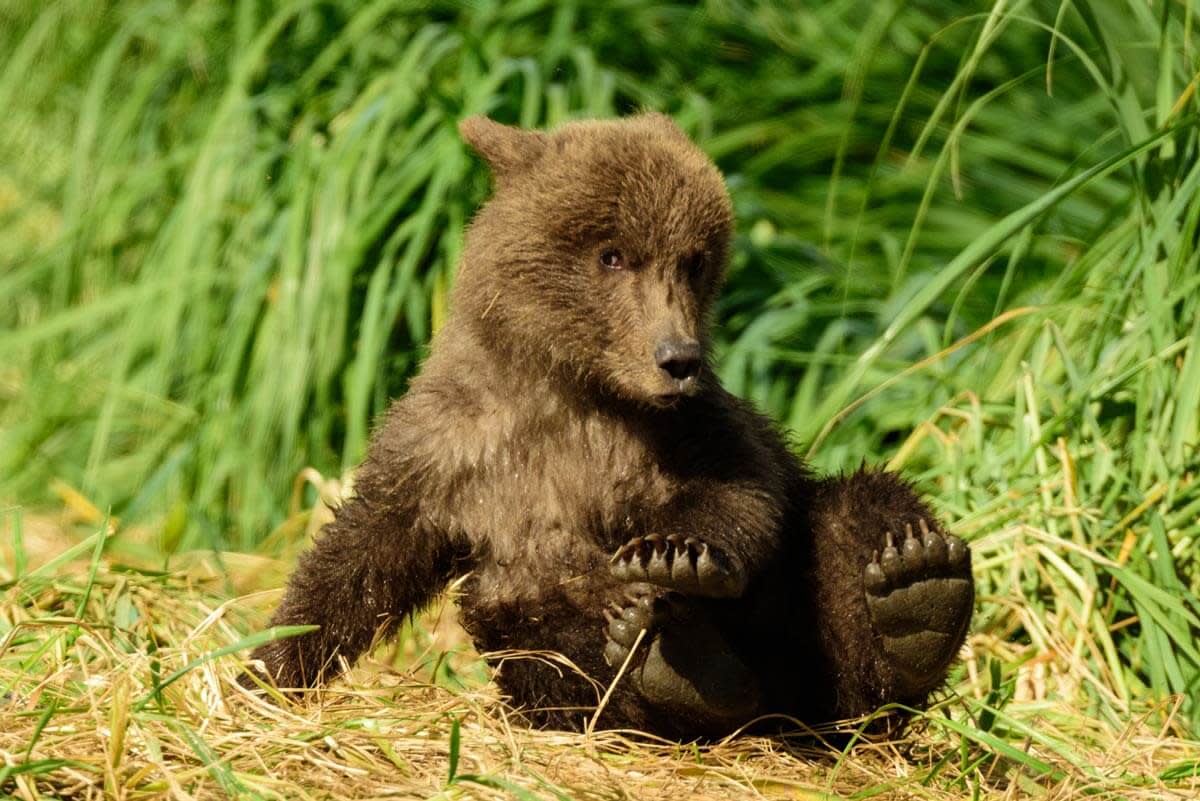
A spring cub playing on the side of the river while his sister and mother are out fishing.
Most of the young ones’ behavior was reminiscent of every stereotypical Disney cuteness you’ve ever seen. Just the claws can rip your arm off with a feather touch.
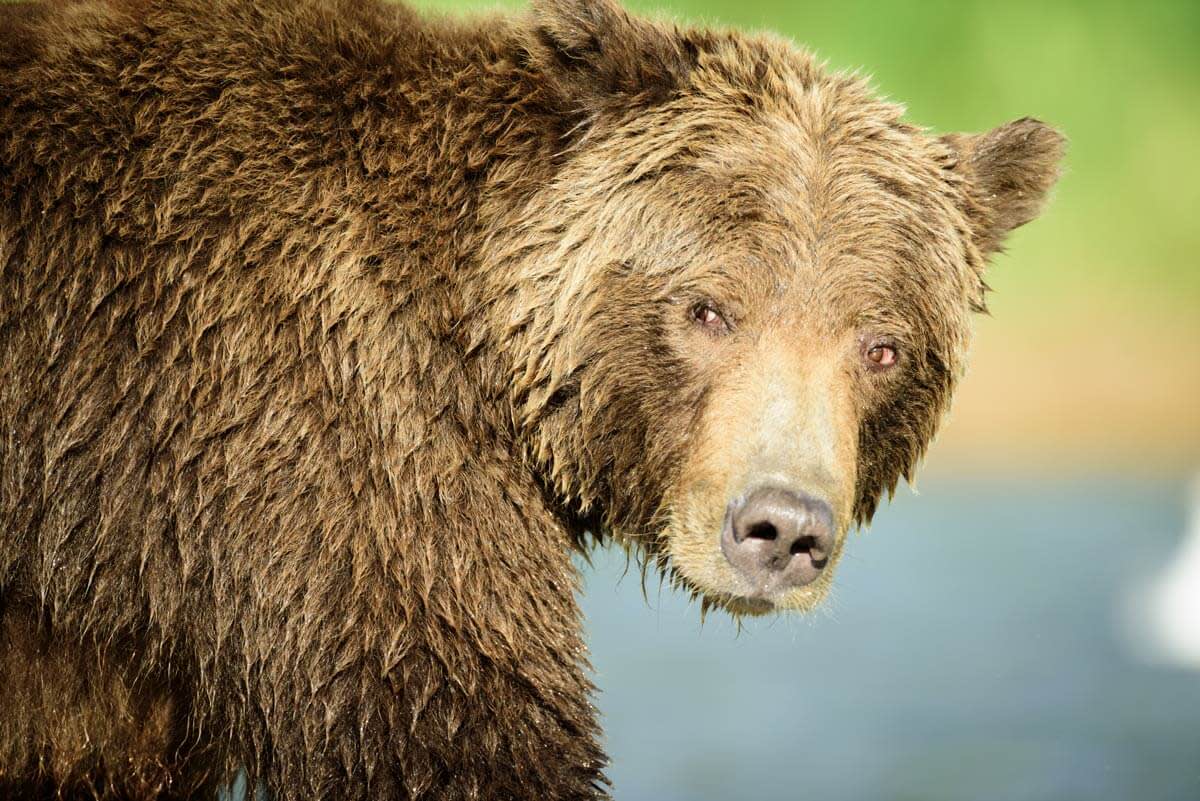
Make no sudden moves; this mama’s got cubs to protect.
At times the bears came within 10 feet or so of our position, which was a bit unnerving, but we were assured by our bear guide that if we made no sudden moves (like chucking our tripods madly and running screaming in the other direction), we would be fine. It made me wonder what sort of training a “bear guide” gets, but I will say Eric was fantastic and we weren’t mauled.
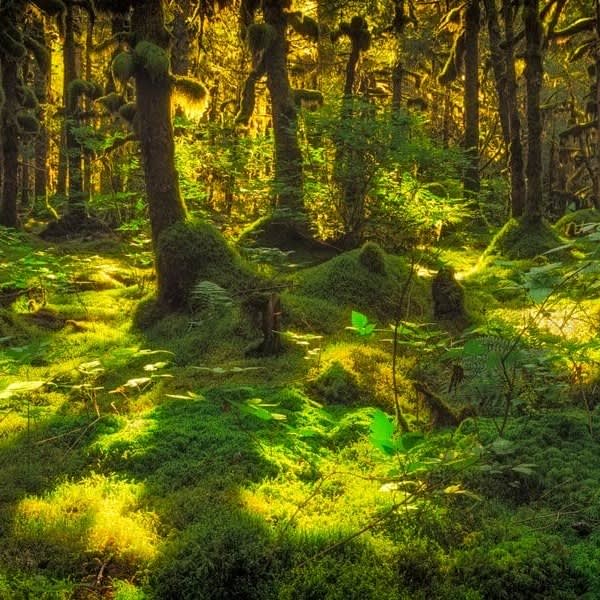
Taking a walk in the moss covered forest near Kodiak Alaska.
The weather was warm and calm, which made the forest idyllic with the sunlight dappling through the trees. Below the soft moss carpet lies the ash of the 1912 eruption of Novarupta on the Katmai peninsula, where the Bears now hang out.
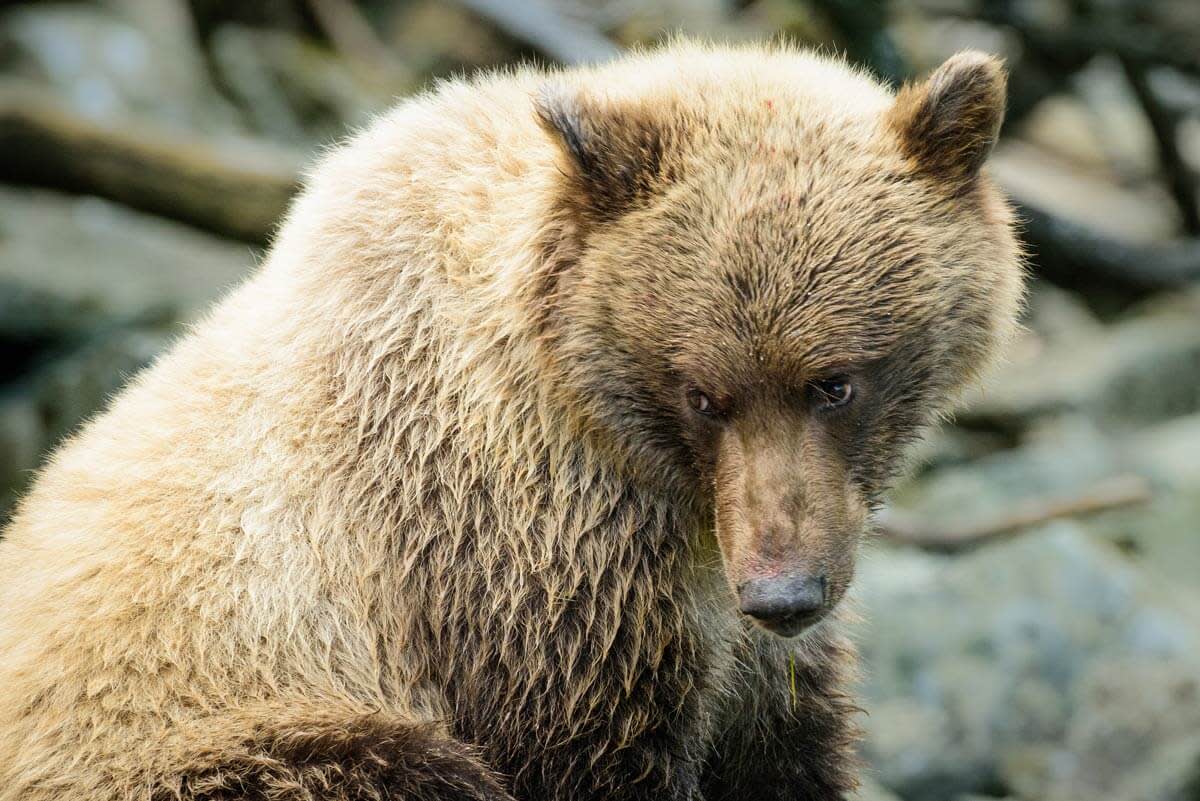
This little guy loved looking cute the whole time we spied on the fishing pool.
This backwards, over-the-shoulder shy look was quite common for the little ones, and I took it to mean they were wary of non-family bears or making sure mamma bear was keeping them safe. The mamma bear would typically snuff a bit to get the little one’s attention, and while this one didn’t make much noise, there was a different mini-bear that had been dubbed “whiny bear” for obvious reasons when we showed up.

A young cub chases down lunch.
At this age, cubs’ claws are already deadly, despite their cuddly disposition.
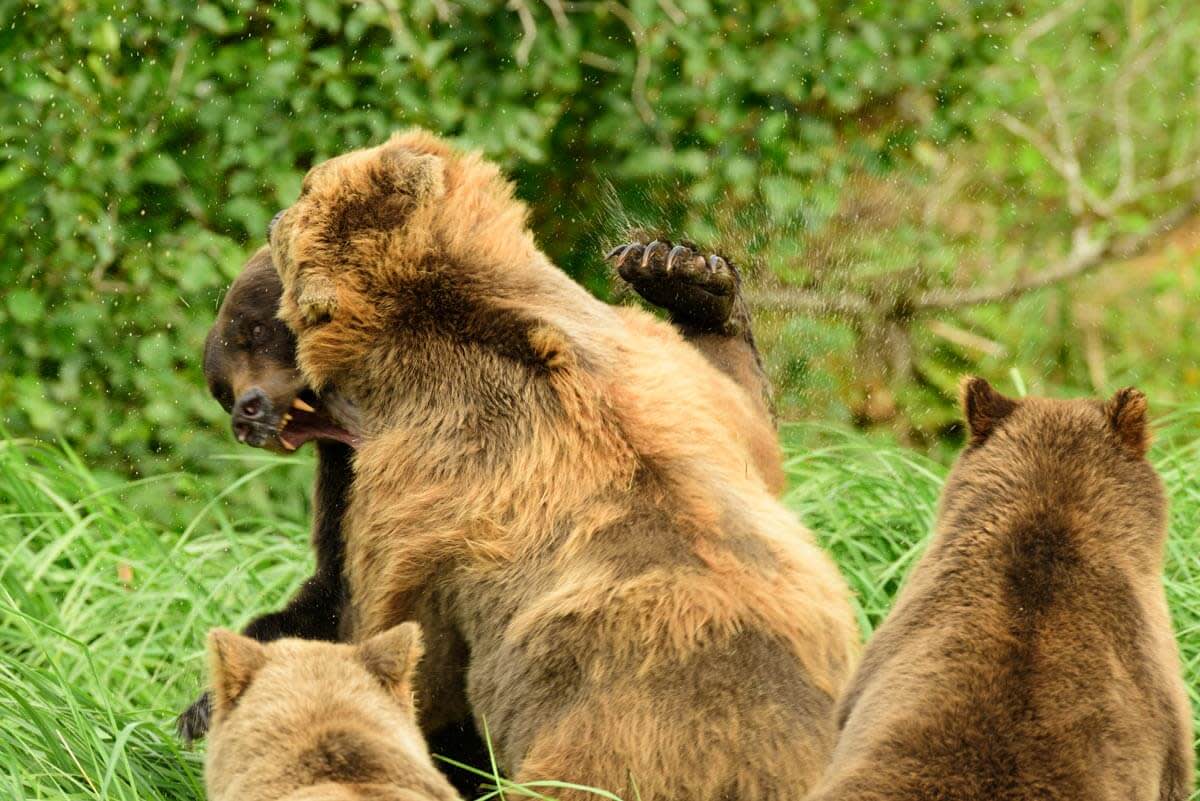
Two groups of mamma bears with their cubs circled each other for over an hour.
Bears are highly territorial, and we were encouraged to stay over 100 feet away from the bears and make no sudden movements. The darker bear circled our position and came at this other mamma bear with her cubs, with intent to chase them away. A great din and sudden flurry of ripping, biting, pushing and hind-leg sumo wrestling ensued. The black bear lost, and the lighter mamma bear went back to lazing at the water’s edge, with only a few scratches to show for her winning defense.

Fall in Alaska comes early. As does snow.
We took an 11 hour bus drive to see Mt. McKinley (to be renamed the Athabascan word “Denali,” meaning “high one,” by Obama during his visit the following day), only to see white-out conditions and a couple of inches of snow. On the next day, the snow continued and made for difficult shooting, but also made for some moody, atmospheric terrain. We never did see Denali, but that only makes a return trip that much more necessary.
